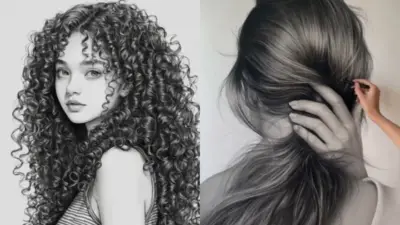Drawing buildings can seem intimidating at first, but it’s actually a skill that anyone can develop with practice and the right approach. Many artists find that breaking down buildings into simple geometric shapes makes the process more manageable. Starting with the largest shapes and proportions before adding details is the key to creating realistic architectural drawings.
When drawing buildings, perspective plays a crucial role in making your artwork appear three-dimensional and realistic. Whether you’re using one-point, two-point, or even five-point perspective, understanding these principles will help you capture buildings as they actually appear to the human eye. You can measure elements against each other to maintain proper proportions throughout your drawing.
Urban sketching of buildings becomes more enjoyable when you focus on capturing the essence rather than every brick and window. Take time to observe the tallest points, the overall silhouette, and unique architectural features that give a building its character. Remember that your goal isn’t perfect photographic reproduction but rather communicating the feeling and structure of the architecture through your unique artistic lens.


Fundamentals of Building Drawing
Drawing buildings requires a solid grasp of perspective principles and an understanding of how light interacts with architectural structures. These foundational skills will help you create realistic and visually appealing representations of buildings.
Understanding Perspective
Perspective is the backbone of architectural drawing. It helps you create the illusion of depth and distance on a flat surface. One-point perspective, where all lines converge to a single vanishing point, is ideal for depicting streets and building facades head-on.
When drawing buildings, establish your horizon line first—this represents your eye level. Next, place your vanishing point on this line. From there, all receding parallel lines in your drawing will converge toward this point.
For complex structures, you might need two-point or even three-point perspective. Two-point perspective works well for drawing buildings at corners, while three-point adds vertical convergence for very tall structures viewed from below or above.
Practice drawing simple geometric shapes in perspective before tackling detailed buildings. This builds your spatial reasoning and helps you understand how forms relate to one another in three-dimensional space.
The Role of Light and Shadow
Light and shadow bring buildings to life, creating depth and dimension in your drawings. Understanding how light interacts with architectural elements is crucial for realistic representation.
Start by determining your light source direction. This will dictate where shadows fall across your building. Typically, shadows are darker and more defined closer to the object and become lighter and more diffused as they extend outward.
Consider the tone variations across different surfaces. Planes facing the light source appear brightest, while surfaces angled away gradually become darker. This tonal contrast helps define the three-dimensional form of the building.
Pay attention to cast shadows—those projected onto adjacent surfaces—and form shadows that occur in recessed areas like doorways and windows. These shadow patterns often follow perspective principles, converging toward the same vanishing points as the building itself.
Remember that reflective materials like glass and metal interact with light differently than matte surfaces like concrete or brick. This variation in material properties adds richness and realism to your architectural drawings.


Materials and Tools
Selecting the right supplies makes a significant difference in architectural drawing quality. The proper combination of drawing media, paper, and accessories can transform a basic sketch into a professional representation of your building design.
Choosing the Right Drawing Media
Pencils remain foundational for architectural drawing, with varied hardness grades serving different purposes. Use softer B-series pencils (2B to 6B) for preliminary sketches and shadowing. For precise linework and technical details, H-series pencils (H to 4H) offer better control and maintain crisp edges.
Pens provide permanence and definition to your work. Consider these options:
- Technical pens: Available in various tip sizes (0.1mm to 1.0mm)
- Felt tip markers: Excellent for bold outlines and quick sketches
- Brush pens: Perfect for creating varied line weights and textures
Markers add depth and color to architectural renderings. Alcohol-based markers produce smooth color transitions ideal for building facades. Water-based markers offer more forgiving application but may wrinkle paper if overused.
Experiment with charcoal for atmospheric effects in conceptual drawings, particularly when conveying the relationship between buildings and their environment.
Paper Selection for Building Drawings
Your paper choice significantly impacts how your architectural drawings will look and last. Trace paper is versatile for iterative design work, allowing you to layer ideas and refine concepts. The translucent quality makes it perfect for studying proportions and making adjustments.
Heavyweight drawing paper (90-110 lb) provides durability and eraser resistance for final presentations. Look for acid-free options to prevent yellowing over time.
For technical drawings, consider these specialized papers:
| Paper Type | Best Use | Characteristics |
|---|---|---|
| Vellum | Technical drawings | Translucent, takes ink well |
| Bristol | Clean linework | Smooth, rigid surface |
| Watercolor | Rendered perspectives | Textured, handles wet media |
Sketchbooks with mixed media paper give you flexibility for field studies and conceptual work. Choose ones with at least 80 lb paper weight to prevent bleed-through when using markers.
Essential Accessories for Precision
Precision tools elevate your building drawings from amateur to professional. An architect’s scale ruler is indispensable for maintaining proper proportions and measurements in your work. T-squares and triangles ensure straight lines and precise angles when creating elevations and floor plans.
Templates save time and improve consistency when drawing:
- Window and door templates
- Furniture templates for floor plans
- Landscape elements for site plans
Erasers deserve careful consideration. Use kneaded erasers for gentle lifting of graphite without damaging paper. Vinyl erasers provide clean removal of darker marks while plastic erasers work best for ink corrections.
Digital tools complement traditional drawing. A good quality scanner preserves your work, while drawing tablets allow for digital refinement. Consider investing in basic architectural drawing software to finalize and present your building designs professionally.


Architectural Drawing Techniques
Architectural drawing requires specific techniques that blend artistic vision with technical precision. These methods help you capture the essence of buildings while maintaining proper proportions and structural details.
Line Drawing and Detailing
Start with basic shapes to establish the building’s overall structure. Draw a light outline of the largest shapes first, then gradually add smaller elements. This approach helps maintain proper proportions and relationships between different parts of the building.
Use varied line weights to create visual hierarchy in your drawings. Heavier lines for primary structures and outlines, medium lines for secondary elements, and light lines for details and textures. This technique immediately improves the readability of your architectural sketches.
Practice controlled linework by using consistent strokes. Hold your pencil lightly for initial sketching, then increase pressure for final lines. For precision, try using a ruler for straight edges while maintaining freehand elements for character.
Consider using a fine-tipped pen for final outlines after establishing your pencil sketch. This creates crisp, defined edges that make your architectural drawings more professional and clear.
Creating Texture and Depth
Incorporate shading techniques to add dimension to your architectural drawings. Use hatching (parallel lines) or cross-hatching (intersecting lines) to indicate shadows and recessed areas. Varying the density of these lines creates different tonal values.
Add depth through strategic shadowing. Study how light falls on buildings and notice how shadows form predictable patterns based on the time of day. Apply this knowledge to create realistic shadows that ground your building in space.
Use stippling (small dots) for subtle texture variations on surfaces like brick, stone, or concrete. The closer together the dots, the darker the area appears, allowing you to create gradual transitions.
Employ atmospheric perspective by making distant elements lighter and less detailed than those in the foreground. This natural phenomenon helps create a sense of depth and distance in your architectural drawings.
Mastering Architectural Elements
Focus on accurately capturing recurring architectural features like windows, doors, and columns. Create a mental library of these elements to draw them consistently across your work. Pay attention to their proportions and relationships.
Learn to recognize and represent different architectural styles. Each period has distinctive elements—Gothic arches, Classical columns, Modernist clean lines. Understanding these characteristics helps you capture a building’s essence.
Practice drawing common architectural details like cornices, balustrades, and moldings. These elements often define a building’s character and period. Start simple, then add complexity as your skills improve.
Use reference materials when drawing complex structures. Photographs, floor plans, or even on-site sketches can provide valuable information about proportions and details that might be difficult to estimate accurately by eye alone.


Adding Color to Building Drawings
Color brings architectural drawings to life, transforming flat sketches into vivid representations that convey mood, materials, and spatial understanding. The right coloring techniques can highlight important elements and create realistic depictions of your building designs.
Basics of Color Theory
Color theory provides the foundation for creating harmonious architectural renderings. Understanding the color wheel helps you make strategic choices about complementary and analogous color schemes for your building drawings.
Primary colors (red, blue, yellow) form the basis of all other colors, while secondary colors (green, orange, purple) result from mixing primaries. In architectural drawings, neutral tones like grays and browns often form the base palette, with accent colors drawing attention to specific features.
Temperature matters in building representation—warm colors (reds, oranges) appear to advance toward the viewer, while cool colors (blues, greens) recede. This principle helps create depth in your drawings.
Consider tone variations to show light and shadow effectively. Darker tones in shadowed areas and lighter tones in illuminated sections create a three-dimensional effect that brings flat drawings to life.


Practice Projects and Exercises
Improving your architectural drawing skills requires consistent practice with targeted exercises. The following projects will help you develop fundamental techniques while gradually introducing more complex challenges to enhance your spatial perception and rendering abilities.
Simple Structures to Start With
Begin with basic geometric forms found in everyday structures. Draw a simple coffee shop by breaking it down into rectangles, triangles, and circles as suggested in the “Habit Coffee Shop” approach. This technique helps train your eye to see buildings as combinations of basic shapes.
Practice the “five-minute sketch” exercise where you quickly capture the essence of small structures like garden sheds, gazebos, or bus shelters. Focus on proportions rather than details.
Try the “window study” exercise by selecting different windows in your neighborhood and drawing them with attention to framing, shadows, and details. This helps you understand scale and architectural elements.
Create a “doorway series” by sketching 10 different entrances. Pay attention to how they interact with the surrounding walls and what makes each unique.
Challenging Projects to Advance Skills
Attempt the “sketch project” exercise mentioned in architecture forums where you design an entire building in a limited timeframe (1-2 weeks). This forces you to make quick decisions and develop your conceptual thinking.
Practice perspective drawing by selecting complex buildings with multiple vanishing points. Start with photographs, then progress to drawing from life.
Try the “negative space” exercise by focusing on the spaces between buildings rather than the structures themselves. This improves your spatial awareness and composition skills.
Challenge yourself with “architectural transformations” where you sketch an existing building, then modify elements to create something new. This builds both analytical and creative skills simultaneously.
Incorporate weekly “material studies” where you practice rendering different building materials like glass, brick, and concrete with appropriate textures and light reflections.
- 56shares
- Facebook0
- Pinterest56
- Twitter0



